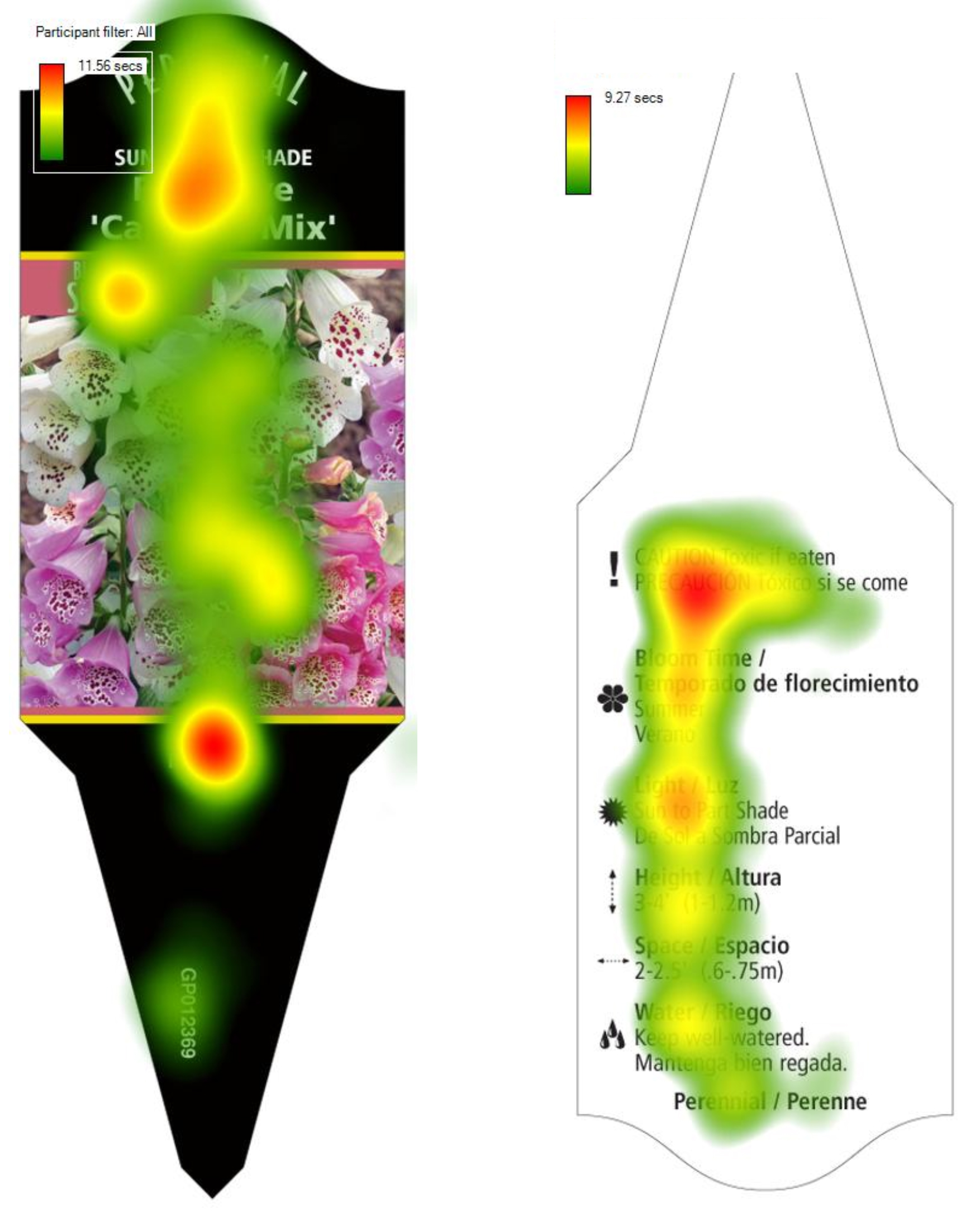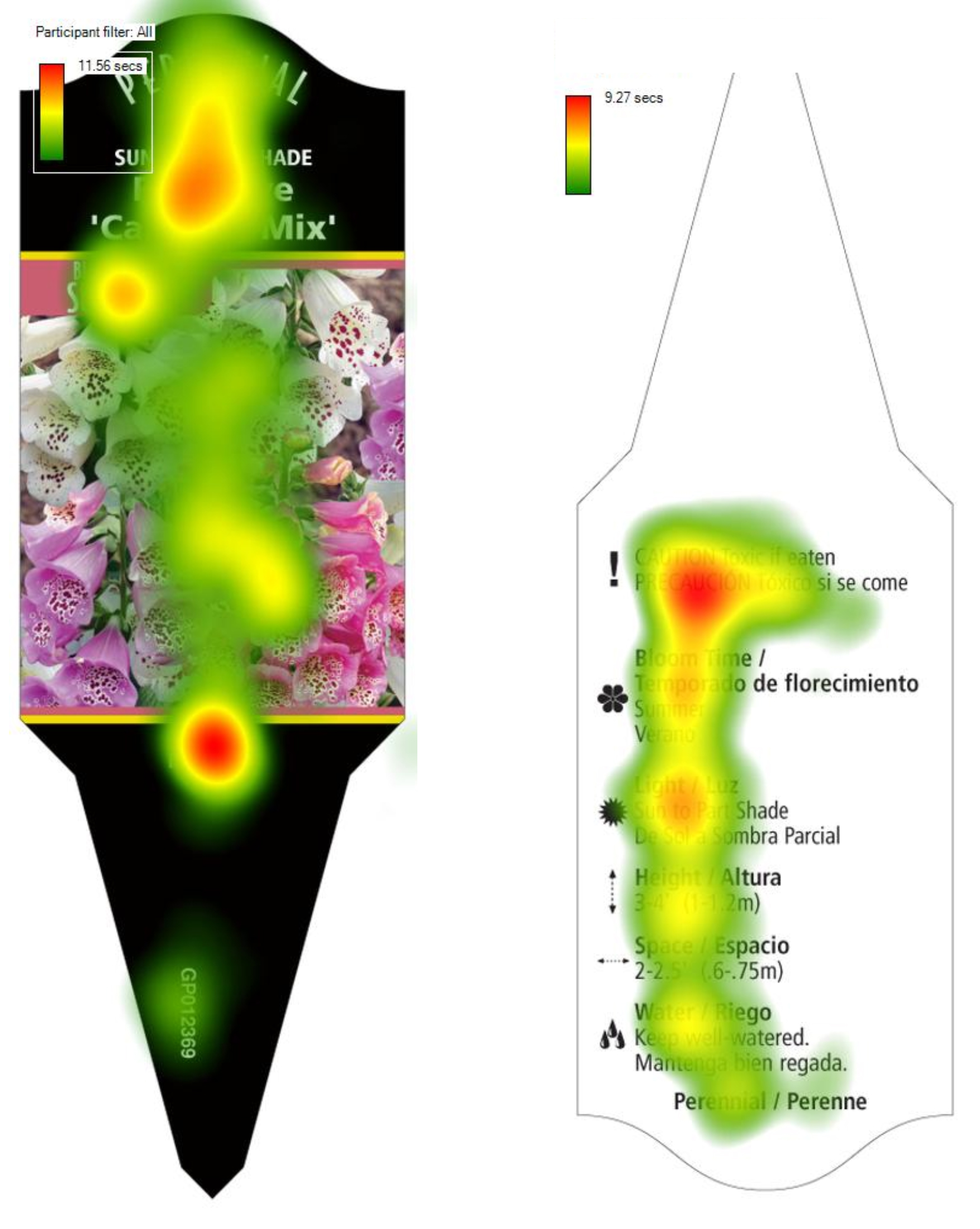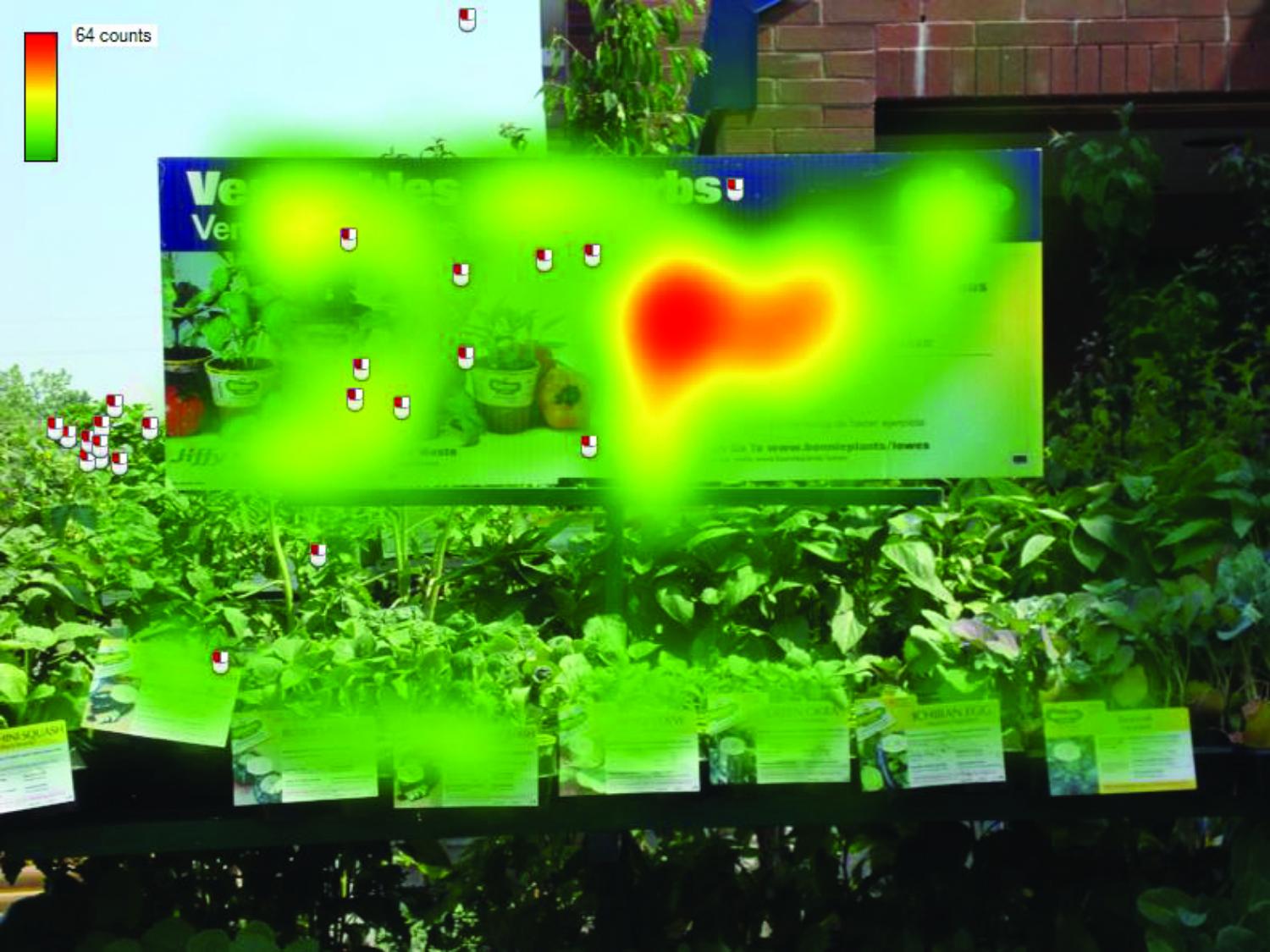
The Eyes Have It
What do you think most consumers are looking at when they are standing in front of a retail plant display? Most growers would probably say it’s the plants if they’ve done a good job of producing a quality crop. The answer might vary for plant retailers, who may not really care as long as whatever the consumers are looking at helps convince them to make a purchase.
Using eye-tracking technology, Michigan State University horticulture professor Bridget Behe is studying what is drawing the attention of consumers when they look at retail plant displays. Behe was first introduced to eye-tracking technology at the 2011 OFA Short Course.
“MasterTag was demonstrating the technology in its trade show booth,” Behe says. “If I wouldn’t have seen this technology at its booth, I wouldn’t be doing this research.”
Since learning of the technology, Behe has worked with a number of colleagues to conduct eye-tracking studies in both the United States and Australia.
Making Price Less Conspicuous
Behe has used the eye-tracking technology in the United States to determine the impact of price sign placement in plant displays.
“There is an effect on where the price sign is placed in a display,” she says. “We found when we put the price sign on the left that it received more visual activity. Study participants looked at the sign on the left hand side of the display faster and longer. We also varied the price from low to medium to high. The higher prices also seemed to receive more visual activity.”
Behe says how the plants were grown really didn’t seem to have much effect on where the signs were placed. Consumers were interested in information such as grown using water conservation practices, grown sustainably, etc. because they could not perceive this information by looking at the plants.
A study that Behe conducted in Australia examined how consumers look at plant displays with and without price information.
“We found that consumers were more likely to buy when the price information wasn’t shown on a sign compared to when it was,” she says. “From what we have learned so far, retailers shouldn’t draw attention to the price. If a price sign is included with a display, it should be placed on the right hand side to draw less attention to it.”
Behe states some sort of plant feature or benefit should be the focus of the signage used in plant displays.
“The benefits are more important than the price,” she claims. “What we don’t see with a lot of horticultural signage are the benefits. When you look at most plant-related signs you mostly see features like 14 inches tall and 24 inches wide. These features can be turned into benefits such as the plant is dwarf and other plants could be placed behind it. Since the plant has a spreading habit, a benefit could be the consumer doesn’t need to buy as many plants to fill in a large landscape bed.”
More Research on Signs
While research has been done on pricing, Behe says she has been unable to find any peer-reviewed research on the signs themselves.
“We have been unable to find any research done on sign background colors, text size or text color,” she says. “There are no research results telling us how to make the price more or less conspicuous.”
Behe said much of the eye-tracking research done outside of horticulture has been with heavily packaged products.
“In horticulture we are dealing with minimally packaged products,” she says. “Information could be placed on the plant containers. What we are finding with eye tracking is the people who have a lot of plant expertise look less at the extrinsic cue or sign. They are more focused on the intrinsic cue, which is the plant itself. To get these more experienced consumers to buy, the plants have to be good quality.
“The novices, who our industry is having a hard time recruiting, don’t have the ability to judge the intrinsic cues. They are relying on someone else to tell them what is good. They are the ones who are using the information on the signs and tags more. They are the ones who are using the information outside of the flower color, foliage qualities, etc.”
As Behe and her colleagues continue to study how to make signs more effective, she hypothesizes the plants’ benefits will better resonate with younger consumers regardless of the signs background color, type color and type size.
“The benefit message is going to be a more powerful one because that is what we usually buy,” she adds. “We don’t buy features; we buy benefits.”
Making Merchandising Products Better
Since discovering the eye-tracking equipment at the Shopper Marketing Expo in 2010, MasterTag has been using the technology to study a wide range of merchandising materials.
“We have tested everything from full displays with banner signs at the top all the way down to pots and tags,” says Joe Fox, MasterTag director of sales and marketing. “Eye-tracking technology can provide us with more insight into what consumers are looking at, what they visually fixate on and what they are able to act on.”
Fox says the company used the technology to test a new line of perennial tags prior to its introduction.
“This line of tags was going to be our in-stock line of perennial tags, so it was a sizable investment,” he shares. “We were adding thousands of individual items so we ran the tags through eye tracking. We had previously verified with consumers that there are about three key points in their decision when buying perennials. Sun or shade and time of bloom were the most important information.”
The perennial tags included a small box above the plant photo indicating the month that the plants flowered.
“Had the eye tracking study shown that consumers were not seeing the box with the bloom time information, we would have had to change the tag design,” Fox says. “That verification was important because it confirmed that we had made the right design layout.”
Information Overload
Fox says consumers continue to want more information.
“We have used eye tracking to determine just how much information consumers want,” he says. “We trialed a label with more information that had blocks of text about a particular plant. By using eye tracking we could tell consumers would get so far into the copy and then they would bail out on reading any more. Their eyes would go to something else.
“Consumers will say they want more information, but they don’t want paragraphs on the back of the tags. We put the tags in front of them and they were able to look at them as long as they wanted. They read about one-third of the way through the amount of information that was on the tag and then their eyes moved onto something else.”
Fox says studies have shown consumers want a few words to tell them what to do in regards to watering, fertilizing, etc., including the use
of images.
“It quickly became evident that quick reference, icon-based, short statements, were the preferred ways for consumers to get the information off of plant tags,” he adds.
For more information: Bridget Behe, Michigan State University, Department of Horticulture, 517.355.5191, ext. 1346; behe@msu.edu; www.hrt.msu.edu/bridget-behe. MasterTag, 800.253.0439; www.mastertag.com.
Eye-tracking studies are providing insight into what consumers are focusing on when looking at retail plant displays.




 Video Library
Video Library 




















